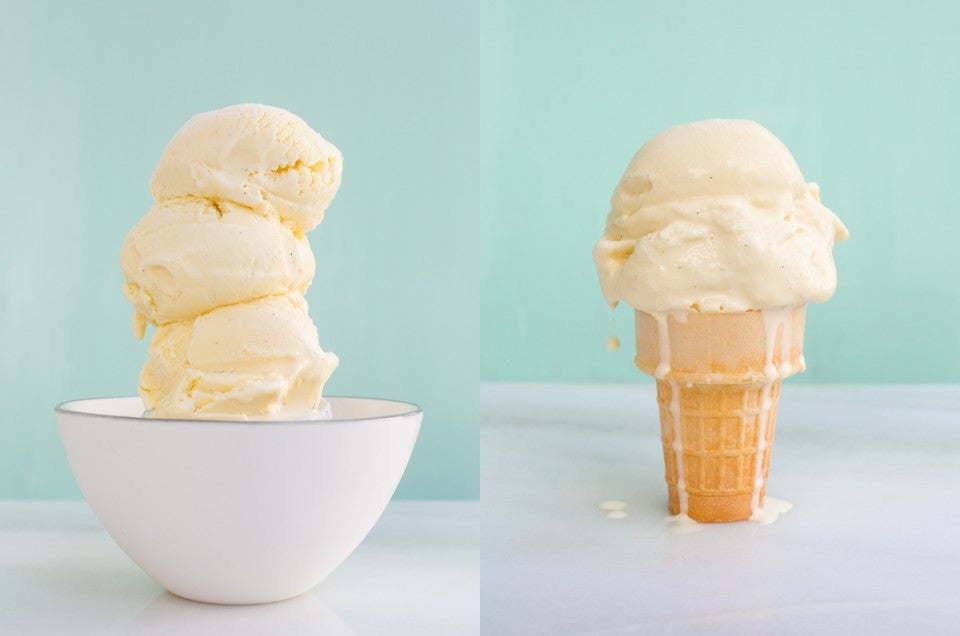


Ah, ice cream; what’s not to love? It’s soul-satisfying and delicious and perfect for hot summer days. But did you know ice cream’s got style, too? Two distinct styles, actually, both of which offer their own benefits to homemade ice cream fans.
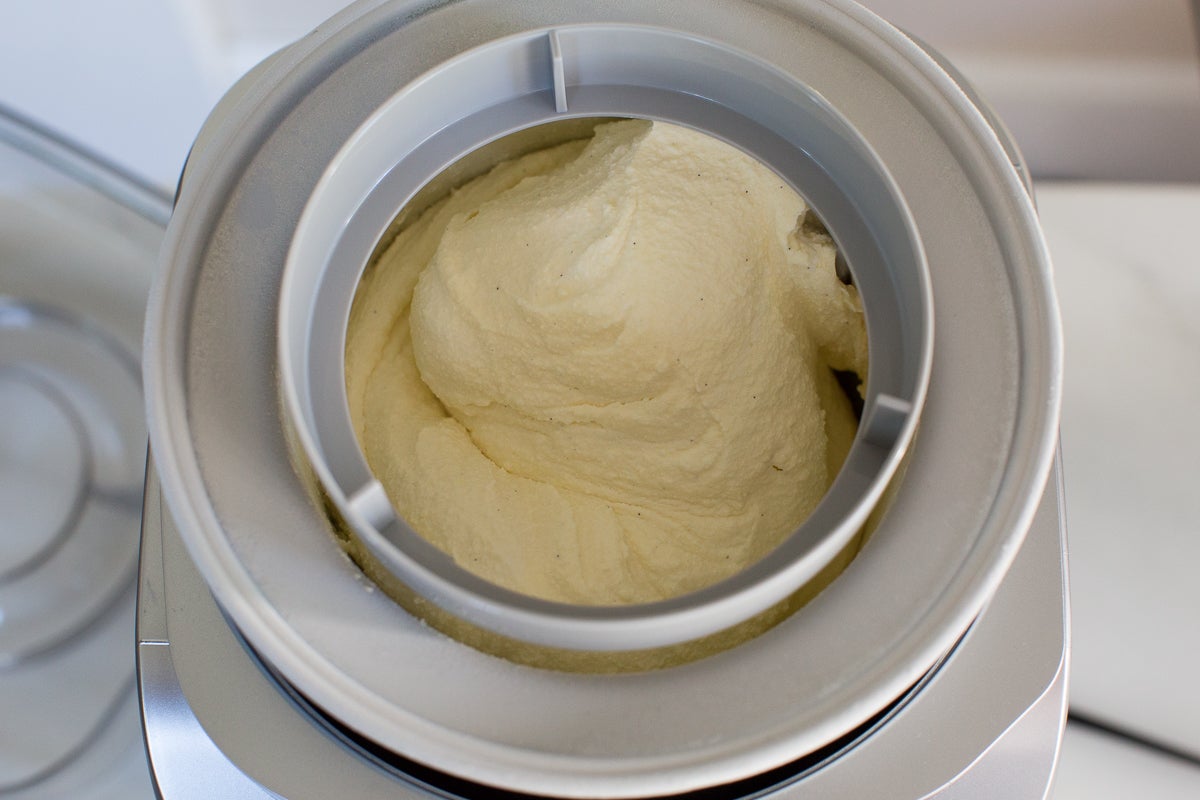
This creamy confection is a native of France, where it was introduced in the late 1600s. It’s the style of ice cream you’re most likely to find at the grocery store or your local ice cream parlor.
Pros: Egg yolks are magnificent emulsifiers; thus custard-based ice creams are rich, smooth, and creamy. The emulsification properties and thickening agents in egg yolk contribute to smaller ice particles in ice cream when churned, making this a popular style among commercial manufacturers and home churners alike. (For more on the science of ice cream, see How to make the best homemade ice cream.)
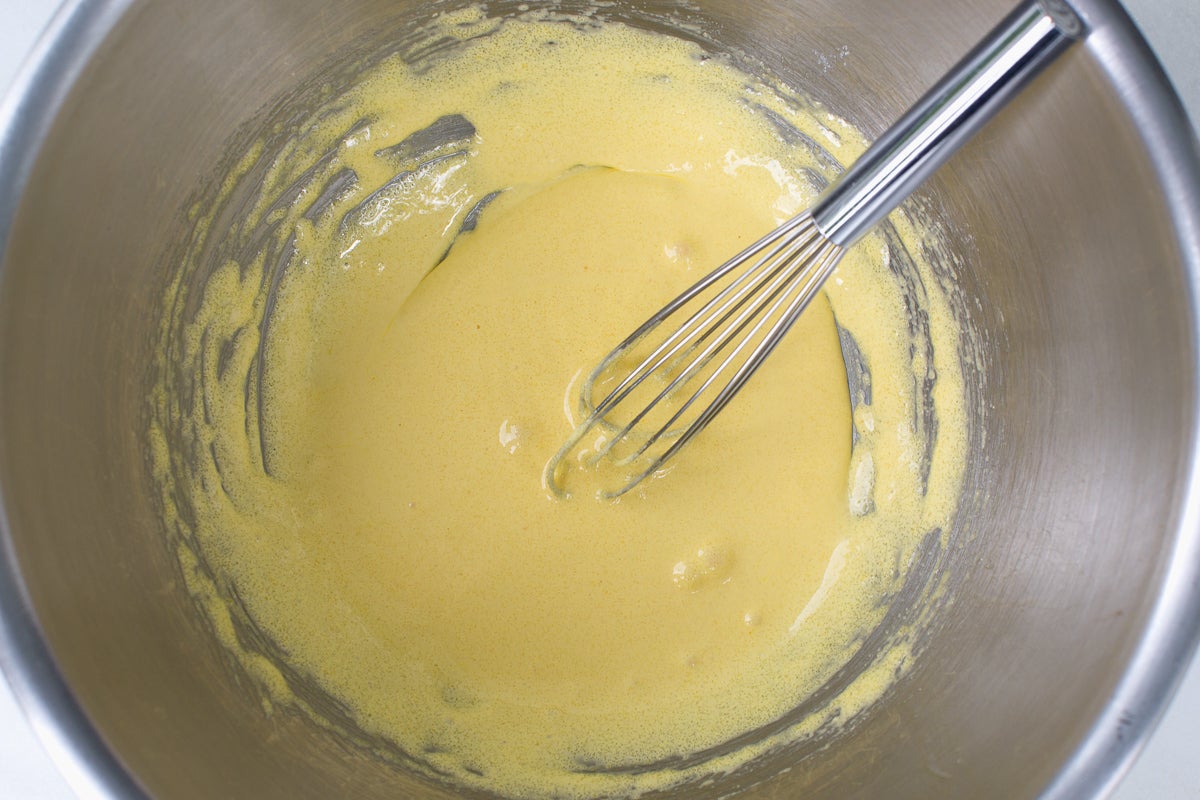
Cons: Custard-based ice cream can have a distinctly eggy taste, which may overshadow the flavors of fresh cream and vanilla. This is less pronounced in ice creams with additional flavoring agents: chocolate, strawberry, etc.
Custard is also a little tricky to make (but not hard, I promise!). Also, this style of ice cream requires some forethought: for best results, the custard base should be refrigerated overnight in order to cool thoroughly, and to allow the fat molecules to relax prior to churning.
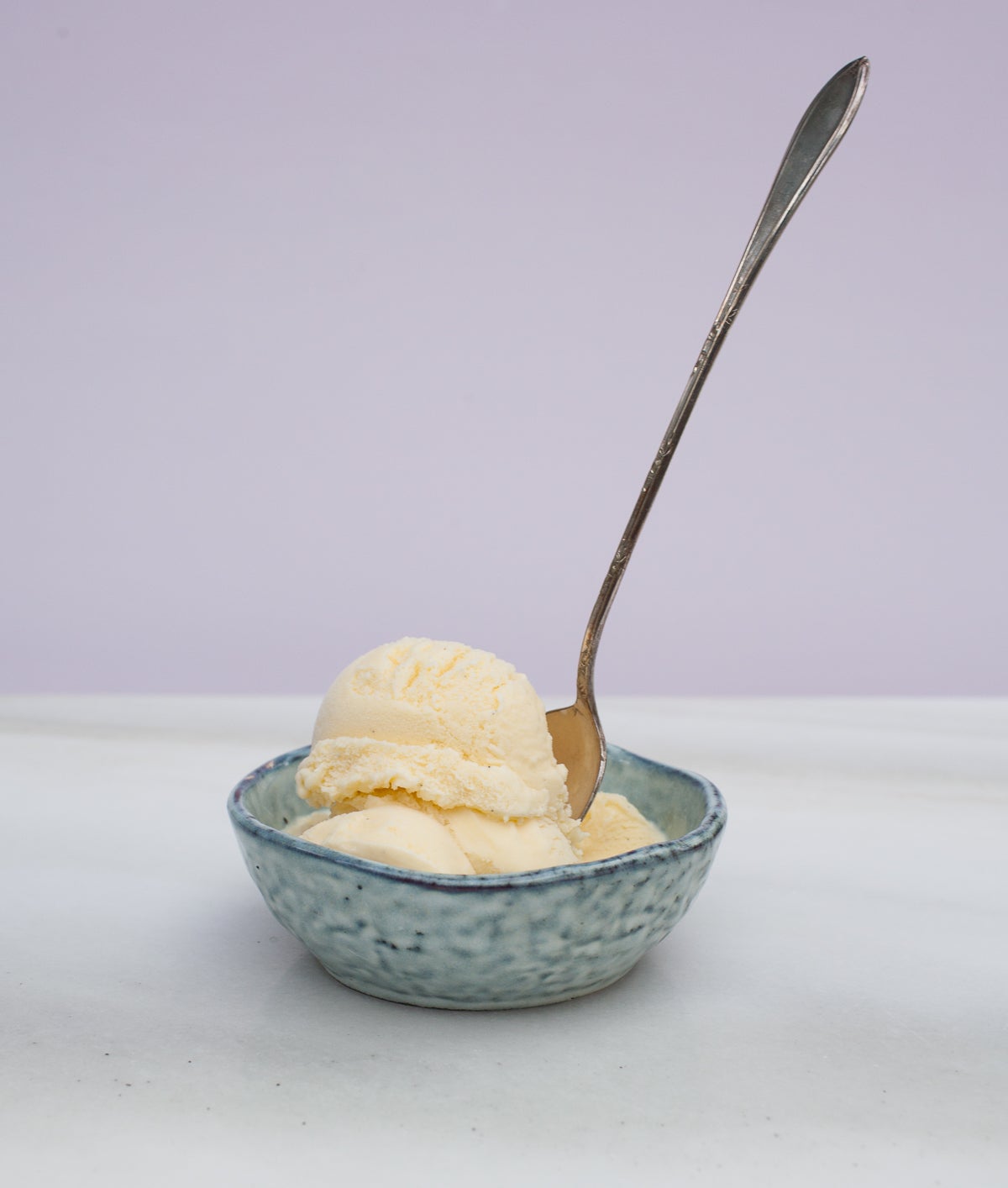
Let’s make some French-style ice cream. Here are the ingredients in our favorite custard-based ice cream, Vanilla Bean Ice Cream.
2 cups (454g) milk
2 cups (454g) heavy cream
1 tablespoon (14g) vanilla extract
4 large egg yolks (80g)
1/2 cup sugar (99g)
1/4 teaspoon xanthan gum, optional; for creamier texture
For preparation details, see the recipe page.
I'll make this recipe two ways: the original (version 1), and my favorite way (version 2), using half-and-half instead of the milk/cream combination; and increasing the sugar to 3/4 cup (150g).
Directly from the machine, the flavor of both ice creams is good, with a slightly cleaner flavor in version 1. Predictably, version 2, with more sugar, is softer right out of the machine.
The real distinction comes after allowing both ice creams to freeze overnight. Version 1 freezes harder than version 2, though both are scoopable.
Version 2 has a superior mouthfeel, though this could be personal preference; I dislike the oily film some cream-based ice cream recipes leave on the roof of my mouth. I’ve since learned this is a result of over-churning: some of the fat literally churns into butter.
Interestingly, even though both ice creams are churned in a 2-quart machine for 25 minutes, only version 1 becomes oily. I suspect using homogenized half-and-half produces an overall more emulsified custard. Half-and-half is also slightly lower in fat than a milk/cream combo.
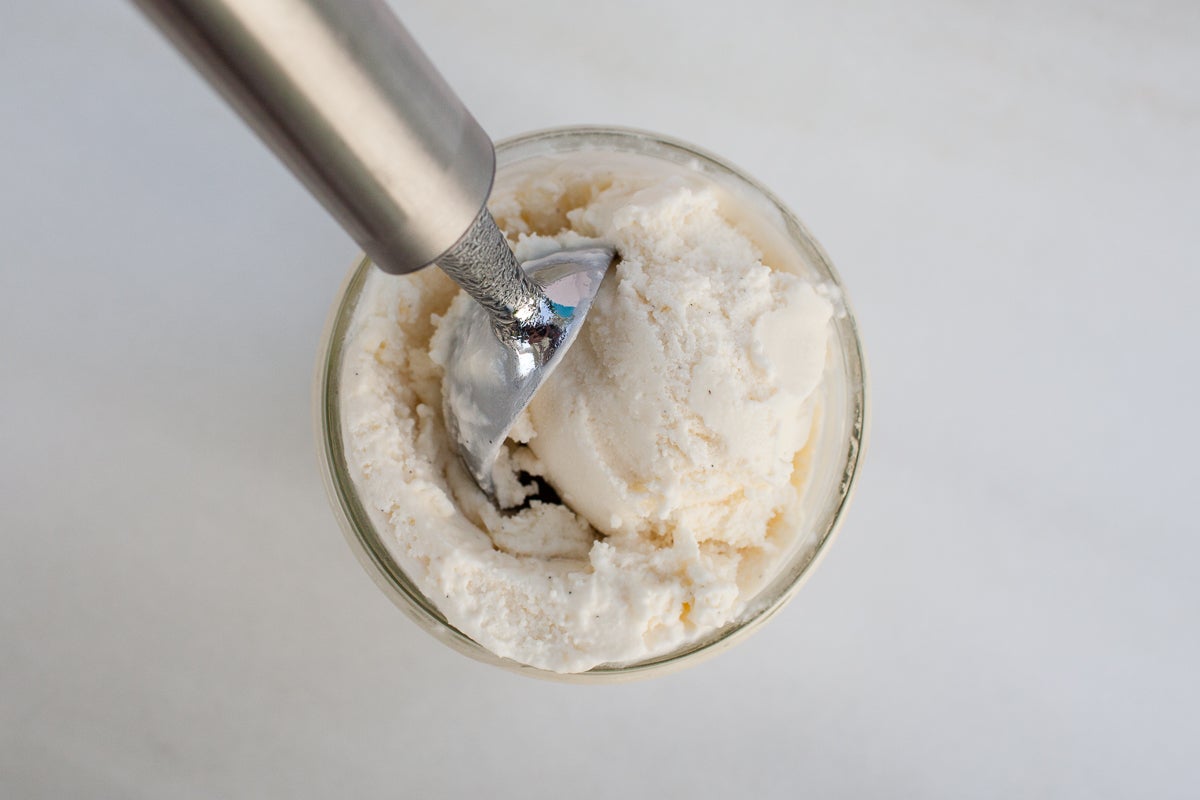
Two weeks later, the difference between these two versions is pronounced. I expected both to be icy; homemade ice cream isn’t meant to last forever (which is hardly a problem for most of us!) Thus I’m pleasantly surprised to find that version 2 is still perfectly creamy and easy to scoop, with very little iciness at all. Version 1 is decidedly icy. Both versions still taste great.
The amount of sugar can make a huge difference in ice cream’s flavor and texture. The addition of just 1/4 cup (50g) sugar to this base recipe improves both its 24-hour scoopability and its long-term shelf life.
Using half-and-half instead of cream mixed with milk helps prevent any potential oiliness, thus improving mouthfeel.
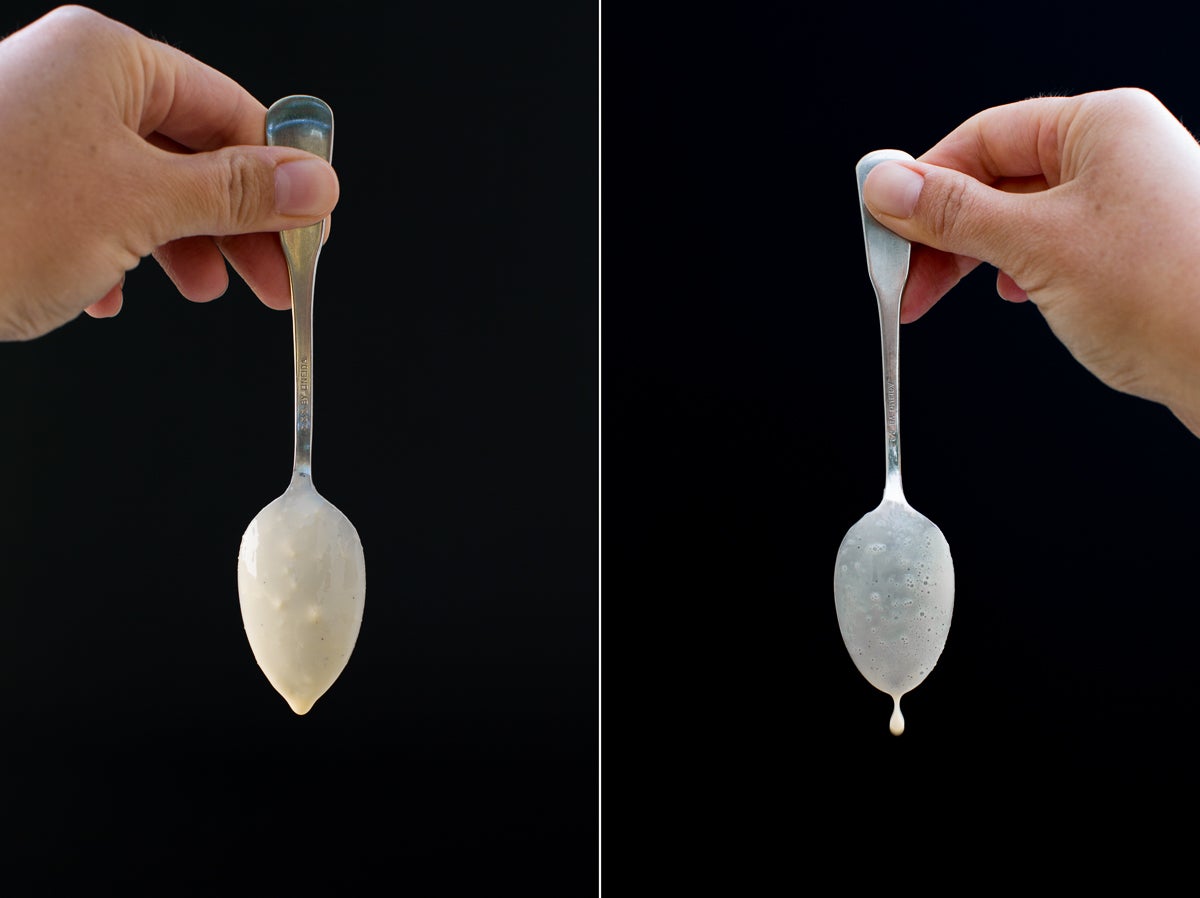
If you overcook your custard and begin to see flecks of solid egg, fix it by pouring it into a blender (or using an immersion blender) and processing until smooth.
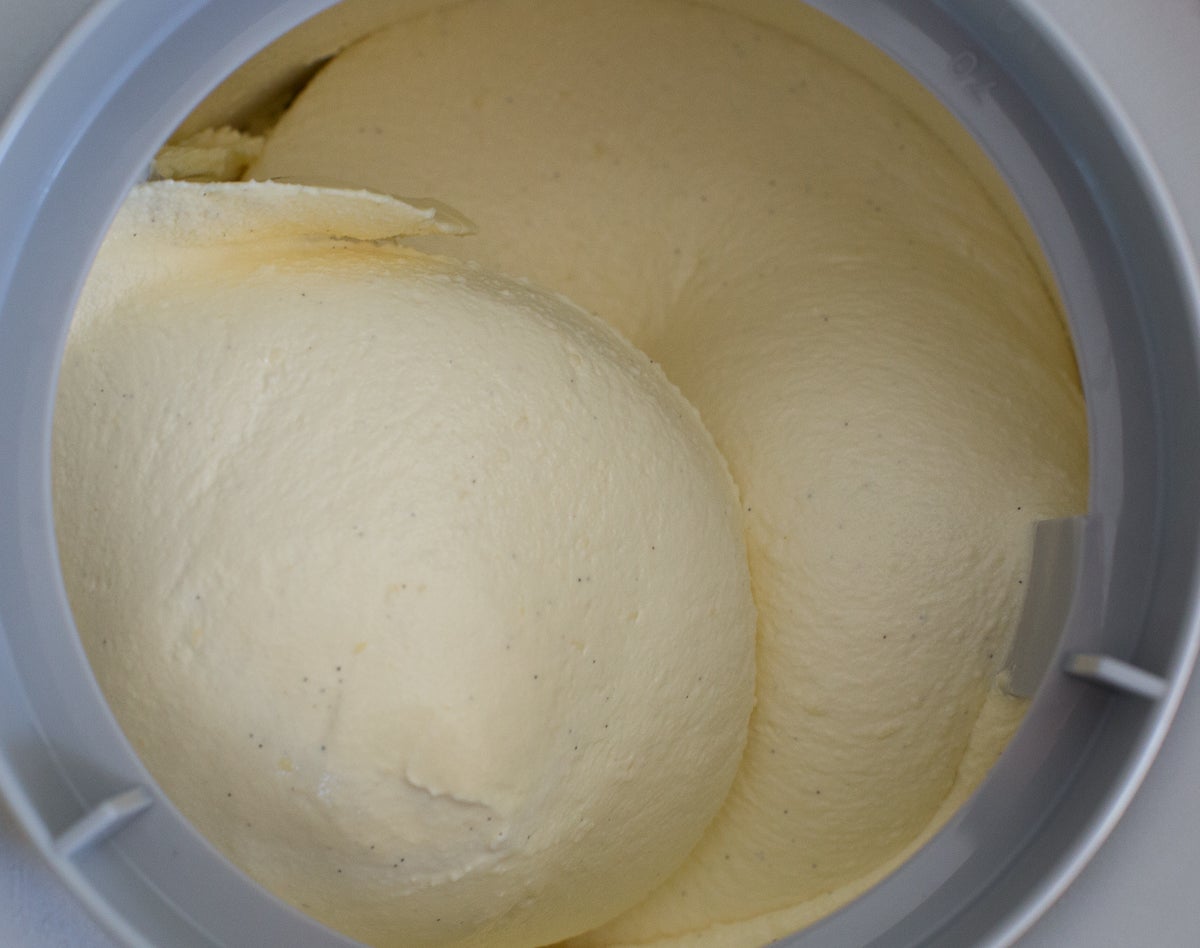
Churn your ice cream for as little time as possible to achieve optimum volume and freezing. This is a skill that you’ll learn over time – after a few batches, you’ll know what perfectly churned ice cream should look like. For this particular recipe, using a thoroughly chilled custard base, I found 21 minutes is the sweet spot.
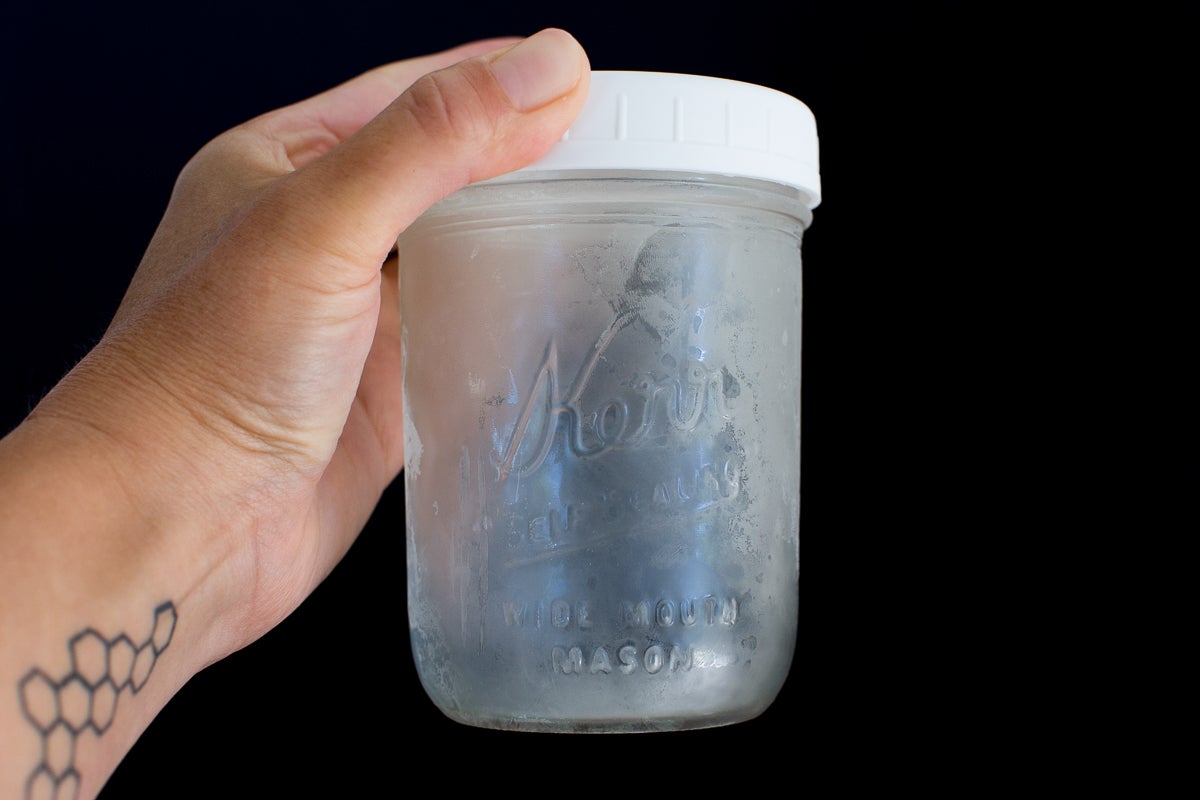
Freeze ice cream storage containers prior to churning, to make sure none of your freshly churned ice cream melts when it comes into contact with the container.
Legend has it that this simple style of ice cream was introduced by Ben Franklin at the Constitutional Convention of 1787, held at the height of Philadelphia’s sweltering summer. Franklin hoped his “crème froid” would lighten tensions and bring some joy to the simmering delegation.
Pros: Philadelphia-style ice cream is quick and easy to make. Because of its freshness (no cooking), its flavors are bright and distinct.
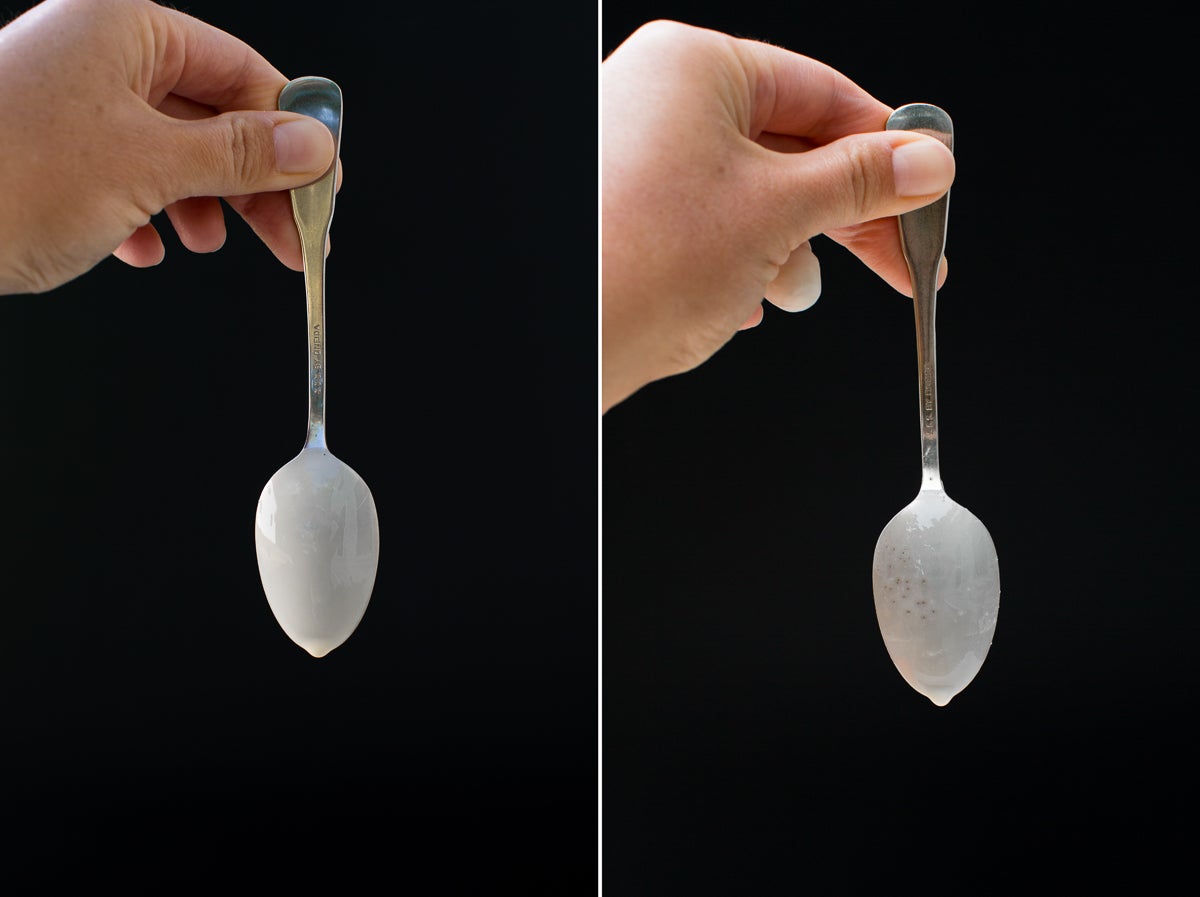
Cons: Without eggs, this style of ice cream doesn’t emulsify as well when churned, and thus tends towards iciness and decreased shelf life. Again, most homes have no problem taking care of homemade ice cream quite quickly.
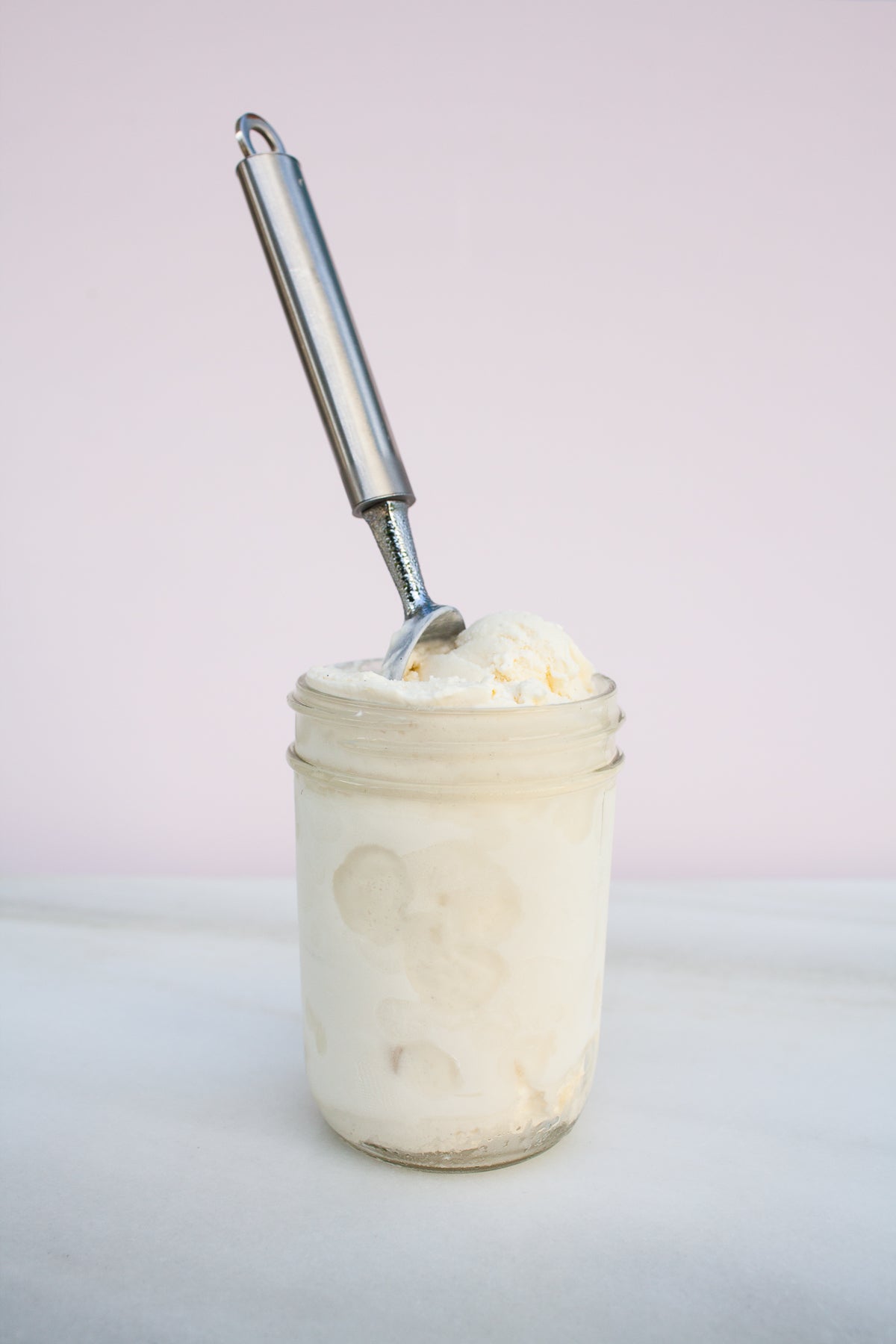
For testing purposes, I slightly modify David Lebovitz’s Philadelphia-style vanilla ice cream recipe (using a greater amount of vanilla).
2 cups (454g) heavy cream*
1 cup (227g) whole milk
3/4 cup (150g) sugar
pinch of salt
1 tablespoon vanilla bean paste
1 tablespoon (14g) vanilla extract
*Try to use the freshest cream available, ideally from a local creamery; since this style of ice cream allows the most subtle flavors in the dairy to shine, you'll really taste the difference fresher local milk can make!
Note: You can substitute half-and-half for both cream and milk here. Half-and-half helps ensure you’re not left with any oily mouthfeel from inadvertently over-churning your ice cream.
Pour 1 cup (227g) of the cream or half-and-half into a medium saucepan and add the sugar and salt. Warm just until the sugar has dissolved, about 3 minutes over medium heat.
Remove from the heat and add the remaining 2 cups (454g) of dairy, the vanilla bean paste, and the vanilla extract. Chill overnight. Freeze as directed in the instructions that came with your ice cream maker.
Predictably, Philadelphia-style ice cream is icier than custard-based ice cream. But the lack of eggs in the base really lets the vanilla flavor shine through.
And how about shelf life? It’s quite good! Over the course of two weeks I notice very little change in flavor or consistency.
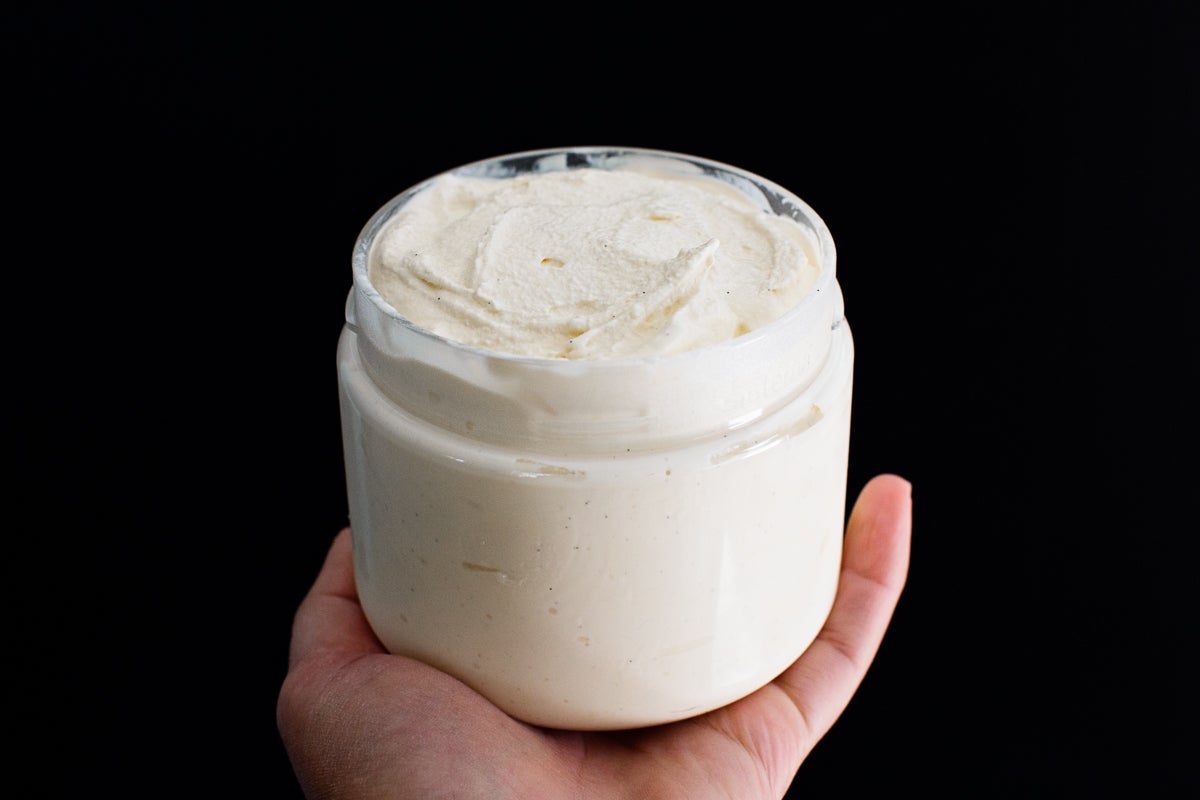
For an added level of sophistication, try using fresh vanilla beans in place of the vanilla bean paste/vanilla extract. Slice a vanilla bean lengthwise and scrape out the seeds. Add the seeds and pod to your milk/sugar mixture and bring it to a simmer. Cover, remove from the heat, and allow to steep for 1 hour. Remove the pod before using.
The addition of 1/4 teaspoon xanthan gum to the recipe improves the ice cream’s texture and creaminess, as well as its shelf life: two-week-old ice cream with added xanthan gum is nearly identical in texture to the day it was churned.
Stir the xanthan gum into the sugar before adding the sugar to the milk. I’ve learned the hard way, mixing xanthan gum with liquid (or adding it directly) will create a gelatinous lump at the bottom of your ice cream that never fully emulsifies. For added insurance, use an immersion blender to quickly blend the base once you’ve removed it from the heat.
Store airtight. Air may be your friend during churning, but it’s your enemy once ice cream is moved to the freezer. For best results, store batches in small containers towards the back of the freezer. And leave as little air as possible between the ice cream and lid; it helps to add a layer of plastic wrap to the top of the ice cream before storing.
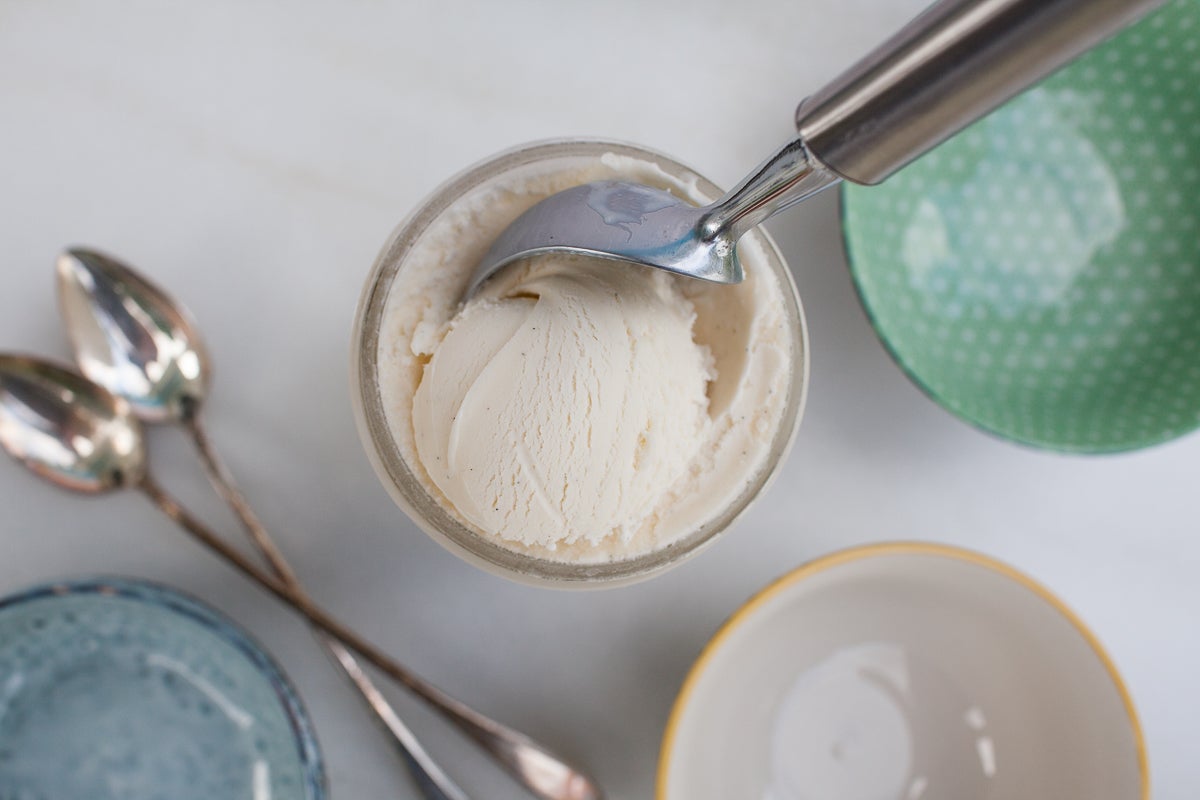
Which style of ice cream do you like best? Share your homemade ice cream experiences in comments, below. And add your tips for novice ice cream aficionados!